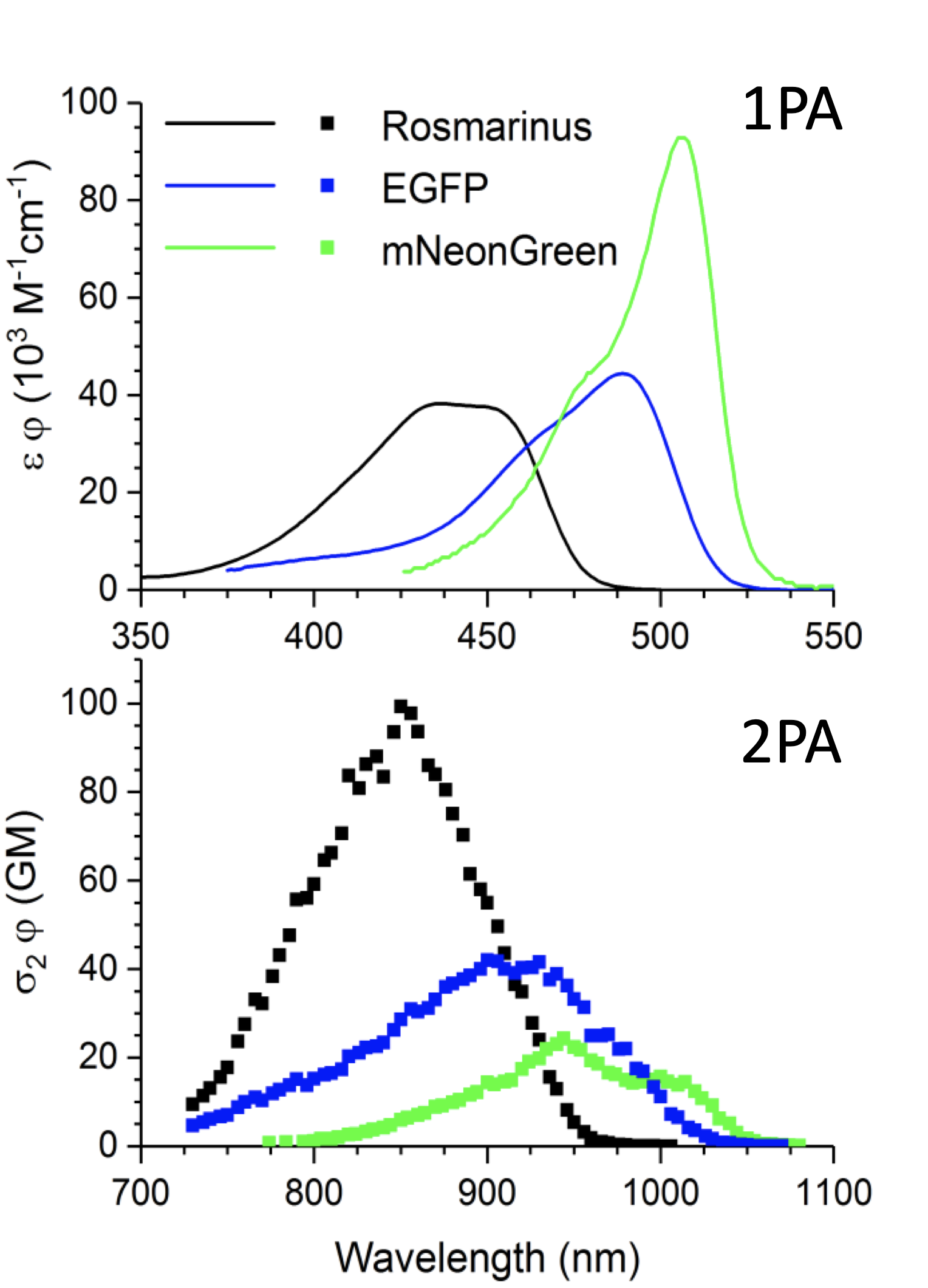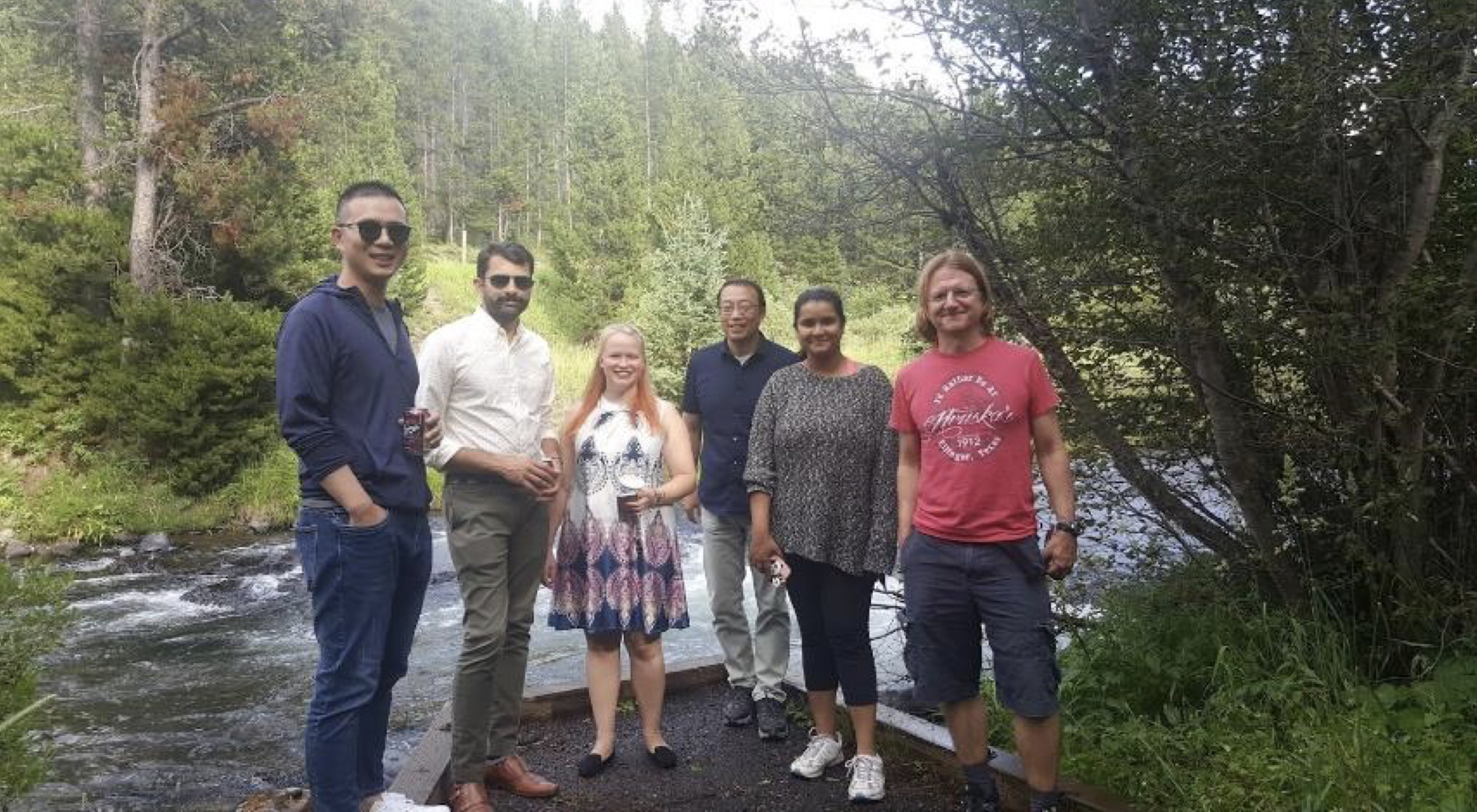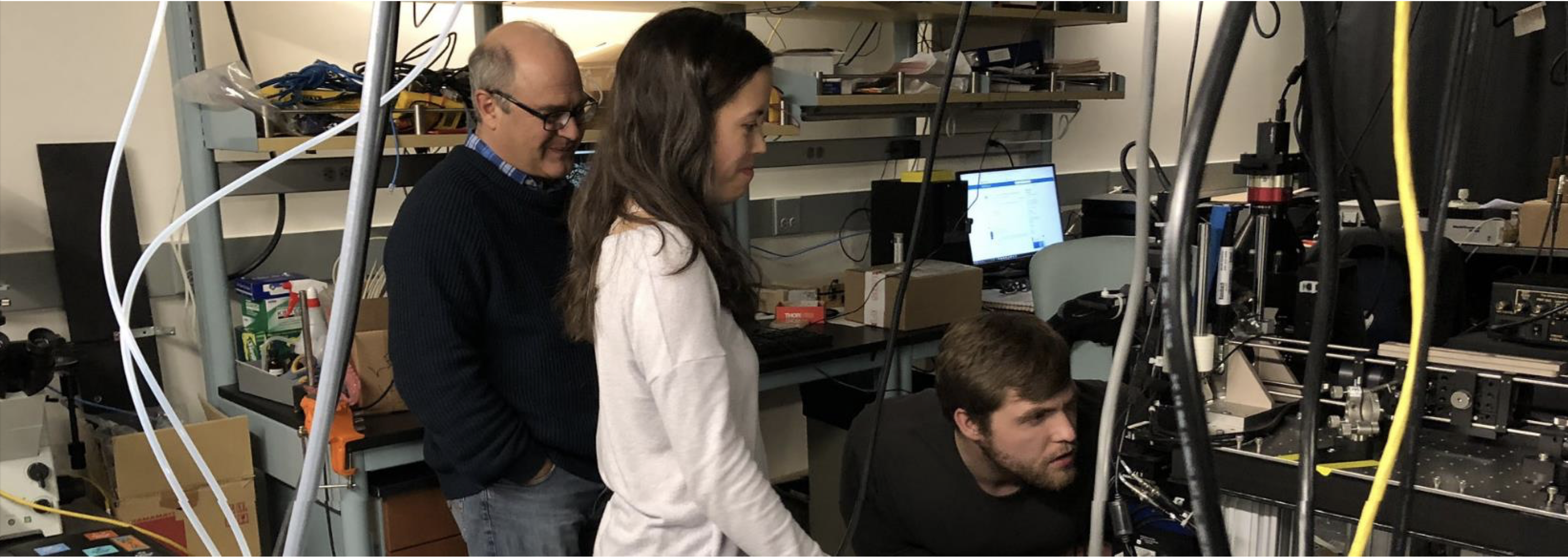Multiphoton Characterization Resource
Genetically-encoded fluorescent probes are used in neuroscience to visualize neurons, record action potentials, and follow communication between neurons in real time in vivo. Two- or three-photon excitation of these probes provide high spatial resolution and deeper imaging as implemented in multiphoton laser scanning microscopy. To select optimum laser wavelength and pick brighter and more photo-stable probe, characterization of nonlinear optical properties of these probes is necessary.
We provide the Resource for Multiphoton Characterization of Genetically-Encoded Probes for the BRAIN Initiative researchers and broader neuroscience community. We will be happy to help you with:

• Measuring of 2-photon absorption spectra in absolute, cross section values;
• Measuring 3-photon absorption spectra and cross sections;
• Characterizing multiphoton photobleaching parameters, i.e. quantum yields, nonlinear absorption cross sections
• Measuring one-photon absorption, emission, and excitation spectra
• Measuring fluorescence quantum yields and lifetimes
• Evolving brighter two-photon probes
Measurement Methods and Protocols
Experimental setup, methods, and protocols for the two-photon absorption spectroscopy can be found at https://en.bio-protocol.org/e3498
Experimental setup and methods for evolving brighter two-photon probes are described on https://opg.optica.org/boe/fulltext.cfm?uri=boe-11-12-7192&id=442725
Experimental setup, methods, and protocols for measuring molecular parameters of multiphoton bleaching can be found at https://www.mdpi.com/1422-0067/23/2/770/htm
Contact and shipping information
If you have created a new fluorescent probe (or use a known probe whose multiphoton properties are not known) and would like to know its multiphoton properties, such as optimum laser wavelength, brightness relative to other probes, photo-stability under femtosecond laser excitation, etc., please contact us.
Contact Mikhail (Misha) Drobizhev [email protected] (406)-994-7810
Shipping address:
Mikhail Drobizhev
Montana State University
109 Lewis Hall
Bozeman, MT, 59717, USA
Annual Multiphoton Workshop
We organize annual summer workshops in Bozeman, Montana. There we discuss theoretical and experimental aspects of multiphoton absorption, its applications in multiphoton microscopy, and provide hands-on demonstration of the measurements methods.
Photo from the 2019 Multiphoton Workshop. To see more, please visit the Google Photos album. https://photos.app.goo.gl/VDW7mUksJt997xW66

Workshops Agendas and Materials
https://docs.google.com/document/d/1Kn3HewZYnUBoBebKQcFcm4Lh-fac-zuM3YHC2NmqbUc/edit
Useful online resources for two-photon spectra of FPs
1. Fpbase is a free and open access, community-editable database for fluorescent proteins photophysical properties. Two-photon spectra of many FP variants and FP-sensors characterized by us during the years are uploaded there. https://www.fpbase.org/
2. Max Planck Institute Brain project runs the repository of excitation, emission, and 2P excitation of many small fluorophores and FPshttps://public.brain.mpg.de/shiny/apps/SpectraViewer/
Our Publications
https://scholar.google.com/citations?user=5u3vlSwAAAAJ&hl=en
Funding
Our Resource is supported by the NIH/NINDS BRAIN Initiative grant U24 NS109107.

